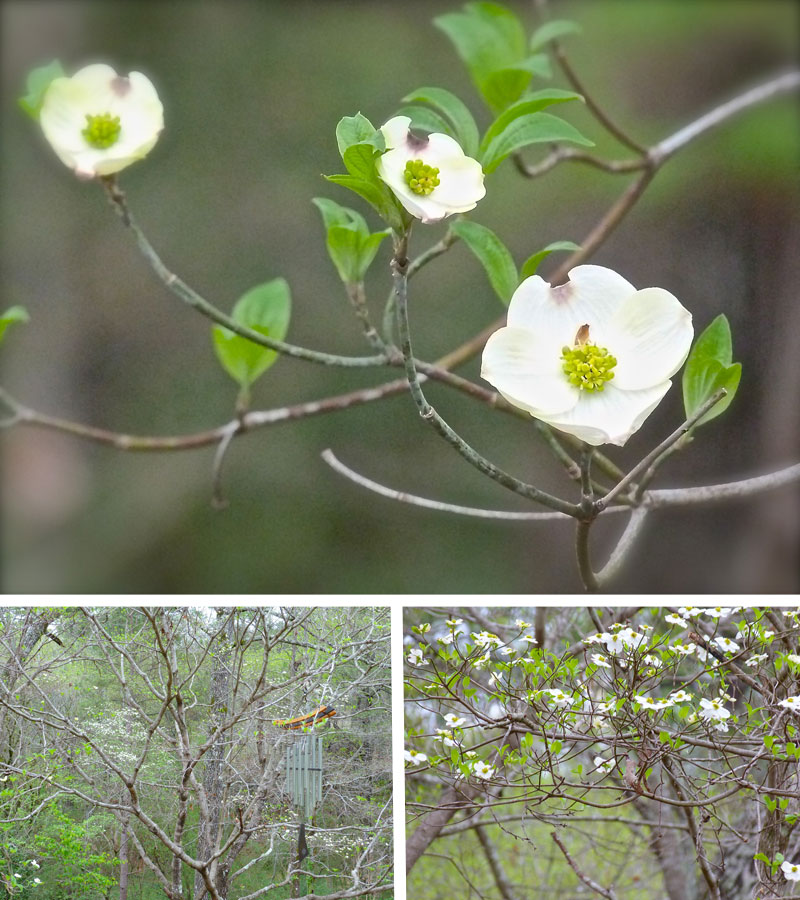An Answer for Dying Dogwoods?
 Sunday, March 26, 2017 at 2:15PM
Sunday, March 26, 2017 at 2:15PM When we moved to our property in 1985, I was enchanted by its abundance of native dogwood trees, Cornus florida. Many of my dogwoods were mature specimens with thick trunks and widely spreading canopies. Each spring fluttering white blooms frosted the woods. Anticipation of the sight brought me eagerly through the winter, and when the dogwoods blossomed I knew spring was firmly entrenched.
Many of my dogwoods were mature specimens with thick trunks and widely spreading canopies. Each spring fluttering white blooms frosted the woods. Anticipation of the sight brought me eagerly through the winter, and when the dogwoods blossomed I knew spring was firmly entrenched.
However, recent years have hit my dogwoods badly. Dogwood anthracnose, dogwood borers, powdery mildew and drought stress have left dogwood skeletons standing forlornly throughout the eastern US. The drought we experienced last fall has been brutal on local dogwoods. Lou has cut a half dozen dead dogwoods from the property already this year, and recently I identified several more dead ones.
When I looked out over the garden this week, I noticed a scattering of white blooms, a pale shadow of former glory.  In past years this spring view was covered in dogwood blooms, where now only a sprinkling of dogwood blooms show. Lou wants to plant new dogwoods. At first I refused, thinking new ones would likely succumb to the same problems as the old ones. However, a local nursery owner pointed out that hybrids are much more resistant to disease and insects than Cornus florida. Many of these are hybrids of Cornus florida/Cornus kousa. The Kousa dogwood is native to Japan and China and is more disease and insect resistant. Kousa dogwood is a pretty tree but its blooms appear after the leaves have appeared, so lacks the impact of our native dogwood. The hybrids seem to have the best of both worlds.
In past years this spring view was covered in dogwood blooms, where now only a sprinkling of dogwood blooms show. Lou wants to plant new dogwoods. At first I refused, thinking new ones would likely succumb to the same problems as the old ones. However, a local nursery owner pointed out that hybrids are much more resistant to disease and insects than Cornus florida. Many of these are hybrids of Cornus florida/Cornus kousa. The Kousa dogwood is native to Japan and China and is more disease and insect resistant. Kousa dogwood is a pretty tree but its blooms appear after the leaves have appeared, so lacks the impact of our native dogwood. The hybrids seem to have the best of both worlds.
Dr. Elwin Orton of Rutgers University has spent about 40 years developing hybrid dogwoods. His Stellar series includes several sturdy varieties, including popular 'Stellar Pink' and the highly anthracnose resistant 'Appalachian Spring'. Dr. Orton also developed 'Hyperion', which is known for its rapid growth and vigor. 'Red Pygmy' is a dwarf red hybrid.
Other plant breeders are working on additional hybrid dogwoods to take the place of our dying ones. I planted a 'Stellar Pink' several years ago. It survived last year's drought, though bloom production is less this year. I told Lou I will look at more hybrids and make a selection to replace a few we lost. However, I don't think anyone has come up with a dogwood that can survive without water. So these will have to be planted in the garden where we can take good care of them.




